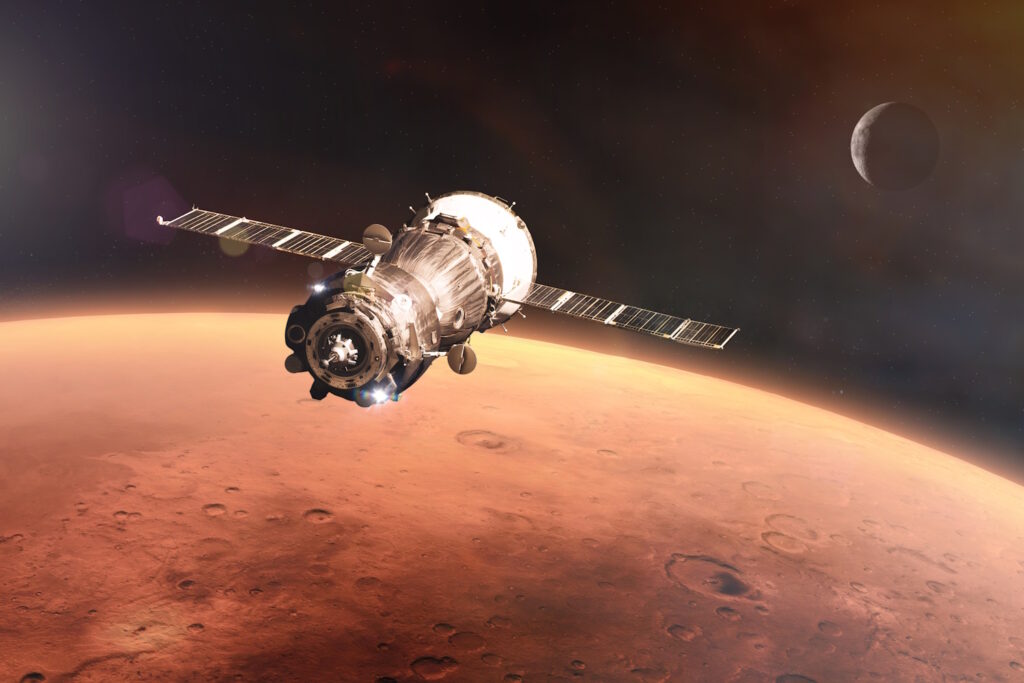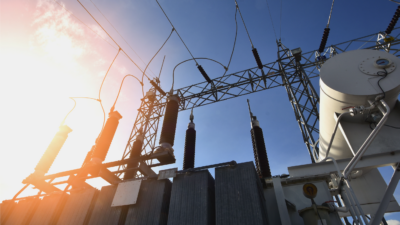How Amphenol SV Microwave’s space-certified components are shaping the future of satellite missions.
TTI Inc. has sponsored this post.

Every journey to space is a leap into the unknown, where even the smallest component can determine the success or failure of a multi-million-dollar satellite. The unforgiving conditions of space — extreme temperatures, intense radiation and the vacuum itself — demand that every part must function flawlessly. Components must not only withstand these conditions but also perform reliably over long periods without the need for repairs or replacements.
Amphenol SV Microwave, a leading provider of space-grade connectors, produces components that meet the rigorous standards of space missions. The company both supplies space-proven parts to large, experienced manufacturers, and helps newer players navigate the complexities of designing for space.
The challenges of space applications
When designing components for space, one of the most common issues is outgassing — i.e., the release of trapped gases from materials, which can compromise the integrity of the component. Outgassing typically stems from non-metallic materials such as elastomers, plastics and adhesive compounds. NASA maintains a list of materials that are prohibited due to outgassing, such as silicone rubber; they provide alternatives that should be used instead.
“We follow those standards and either vent and bake out the connector so it outgasses quickly — which eliminates any chance for a corona — or we use materials that don’t outgas at all,” says Doug Snader, sales advisor at Amphenol SV. “In space connectors, it’s better to use mechanical captivation rather than relying on epoxy, as some epoxies tends to outgas. There are some people that use epoxy, but it’s custom epoxy that has low outgassing properties.”
To mitigate outgassing issues, Amphenol SV replaces silicone rubber gaskets with Viton. PTFE is another preferred material for RF connectors due to its extremely low outgassing properties until very high temperatures are reached, close to its melting point.
Another space challenge is multipaction, which occurs when there is an air gap of more than 0.003 inches between mating interfaces. The European Space Agency offers a multipaction calculator, and Amphenol SV also offers insights on whether designs are well within safe operating parameters or if they should undergo validation testing. RF power, tolerances, and gaps between surfaces are all variables to be considered. Snader recommends tackling multipaction with wedge dielectric designs.
“Most RF connectors have a flat PTFE-to-PTFE dielectric mating at the reference plane, and that’s where you can get an air gap, because of the tolerances on the insulator itself,” says Snader. “If you make a wedge dielectric so that the cone fits into the opening and it’s a wedge match, that reduces the gap to less than three thousandths of an inch. We encourage our customers to go that route, especially if it’s a high-power application.”
Vibration is another factor to consider, especially during launch where connectors must endure significant forces without failing. Amphenol SV addresses this challenge through proven, legacy, space-flight designs and rigorous simulation, verification, and validation testing.
While push-on connectors are often favored for their compact size and ease of use, they face the risk of disconnecting during launch vibrations. Amphenol SV’s solutions include traditional push-on connectors that are augmented with enhanced retention features like threads (threaded SMPx series) or bayonets (QuarterBack SMPX series) so that the locking mechanism ensures that connectors remain securely mated throughout the journey into orbit.
Differing testing requirements for large satellite manufacturers versus LEO constellations
Testing requirements in the space industry vary greatly depending on the type of satellite and the manufacturer’s priorities. Large satellite manufacturers often opt for exhaustive testing, pushing the cost of commercial off-the-shelf (COTS) parts much higher. Amphenol SV frequently advises customers to focus on more practical testing approaches, such as conducting RF tests before and after vibration tests, rather than during vibration when the connectors are inactive in the application.
On the other side of the coin, LEO satellite manufacturers tend to minimize testing requirements to save time and reduce costs. “They launch as many satellites as they can — and if they lose one or two, it’s less of a concern,” says Snader.
Amphenol SV also advises both types of clients to consider qualification by similarity when applicable, which reduces cost and lead time.
“My observation is that the big satellite companies trying to get into the LEO or nano satellite markets are having a hard time,” says Snader. “They say they want to buy COTS products, but then they start adding additional tests because that’s their heritage — that’s what they know. Pretty soon, you’re selling them a part that is way different from the COTS part.”

Amphenol SV’s space solutions
Amphenol SV continuously adapts its technology to meet the unique demands of space applications, with expertise across coaxial connectors, cable assemblies and thin-film components.
One of their strengths is evolving common connector designs to withstand space conditions. Key issues are frequency and power handling; larger satellite manufacturers use TNC or SC connectors because they want high power, while LEO satellites use low-power connectors like 2.92mm or SMA.
“High power is when you reach a power rating where the center conductor temperature exceeds the connector’s high-temp rating,” says Snader. “What we do to help dissipate the heat is switch from a PTFE insulator to Fluoroloy-H dielectric, which has almost the same electrical properties but a much higher temperature rating. This can be applied to any series of connectors that have PTFE dielectric. Typically when we use a wedge with Fluoroloy-H, it really increases the power rating well above what it would normally be.”
Amphenol SV also customizes board-mount connectors and designs specific footprints based on the customer’s board materials.
In terms of cable technology, standard RF cable jackets made from materials like PTFE or FEP tend to degrade into powder when exposed to space radiation. Amphenol SV addresses this issue with radiation-resistant Tefzel jackets for external satellite cables.
Amphenol SV’s innovations extend to mitigating mechanical challenges, such as tolerance stack-up between circuit boards. Their use of spring-loaded bullets ensures a reliable connection for both the signal and ground paths, which prevents signal loss caused by small variances in connector alignment.
Amphenol SV also specializes in thin-film components, particularly attenuators and terminations. “I’d say we’re probably one of the largest space manufacturers of attenuators in the world,” says Snader. “It’s a big part of our space business, and it seems to be one of the fastest-growing areas.”
Amphenol SV’s attenuators support frequencies up to 40 GHz, with some models reaching 67 GHz. The company is also working on attenuators that will go up to 110 GHz, in line with the space industry’s move toward higher frequencies.
“We continue to work with more compact footprints for boards and connectors,” says Snader. “Our leading focus right now is on reducing size while increasing frequency capabilities. Thankfully, those two product strategies work together because the smaller the connector, the higher the frequency it can handle.”
Amphenol SV’s space heritage
Amphenol SV has a long history of success, with a space heritage that spans over five decades. The company’s connectors and cables are featured on a wide range of high-profile satellites — including GPS systems and major projects like the James Webb Space Telescope, where they supplied $2 million worth of material. Amphenol SV’s products have been deployed on almost all major Internet satellites, as well as on legacy systems such as Intelsat and Milstar.
“Space customers like to stick with things they know work,” says Snader.
On the flip side, sometimes this means engineers are not quite open to newer innovations that may offer better performance, based solely on the fact that they haven’t yet flown in space.
“I think a lot of engineers are afraid to make a change because of legacy,” says Snader. “There are new products out there that would probably be better from an electrical standpoint than the existing products that have been in space, but no one’s willing to make that leap. I use our Quarterback series as an example. It took about three or four years for someone to actually design it and put it in space because we couldn’t say the part had been in space before, and that in itself was a deterrent. So, I would advise that just because something hasn’t been in space yet doesn’t mean it’s going to fail. It just means nobody’s tried it yet.”
To learn more about the Amphenol SV Space Campaign, visit TTI. To find more about Space advanced connector solutions, visit Amphenol SV at TTI.
Visit TTI and Amphenol SV to learn more.



